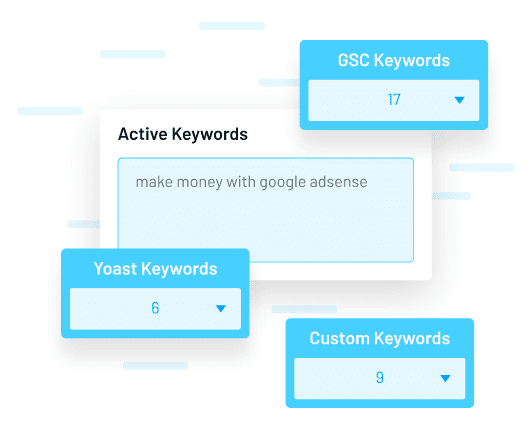In the ever-evolving world of SEO, staying ahead of the curve means understanding not just the latest trends, but also the foundational strategies that continue to shape search engine algorithms. One such strategy that has stood the test of time is the Hub and Spoke model, a powerful internal linking technique that enhances site structure, boosts authority, and improves user experience.
This article will guide you through the ins and outs of building a hub and spoke model, explaining why it matters, how it impacts SEO performance, and providing a step-by-step framework to implement it effectively.
What Is Internal Linking and Why It Matters
Internal linking is the practice of connecting pages within your own website using hyperlinks. These links help users navigate your site and allow search engines to crawl and index your content more efficiently. When done correctly, internal linking can improve your site’s architecture, distribute link equity, and enhance user engagement.
The Hub and Spoke model takes internal linking to the next level by organizing content into a structured hierarchy. The “hub” serves as the central pillar of a topic, while “spokes” are individual pieces of content that dive deeper into specific subtopics. This model not only helps users find relevant information quickly but also signals to search engines that your site is authoritative and well-organized.
How Internal Linking Impacts SEO Performance
Internal linking plays a crucial role in SEO performance. Here’s how:
- Improved Crawlability: Search engines use internal links to discover new pages on your site. A well-structured hub and spoke model ensures that all your content is easily accessible to crawlers.
- Enhanced Authority: By linking related content together, you build a network of authority around a topic. This can help your hub page rank higher for competitive keywords.
- Increased User Engagement: Internal links encourage users to explore more of your content, increasing dwell time and reducing bounce rates—both positive signals for search engines.
- Better Keyword Coverage: A hub and spoke model allows you to target multiple long-tail keywords, expanding your reach and improving your chances of appearing in search results.
For example, if your hub is about “content marketing,” your spokes could include topics like “how to create a content calendar” or “measuring content marketing ROI.” Each of these speaks targets a specific long-tail keyword, helping you capture more traffic over time.
Step-by-Step Implementation Framework
Building a hub and spoke model requires careful planning and execution. Follow this step-by-step process to create an effective internal linking strategy:
1. Define or Audit the Current Situation
Start by analyzing your existing content. Identify high-performing pages and determine which topics have the potential to become hubs. Use tools like Google Analytics, SEMrush, or Ahrefs to uncover gaps in your content and opportunities for improvement.
2. Apply Tools, Methods, or Tactics

Use keyword research tools to identify potential hub topics. Look for keywords with high search volume and moderate competition. Once you’ve selected a hub topic, brainstorm related subtopics (spokes) that align with your audience’s needs.
Tools like Google’s “People Also Ask” and AnswerThePublic can provide valuable insights into what your audience is searching for. You can also use SurferSEO or MarketMuse to analyze competitor content and identify content gaps.
3. Measure, Analyze, and Optimize
After creating your hub and spoke content, monitor performance using analytics tools. Track metrics like organic traffic, bounce rate, and average session duration. Use this data to refine your strategy and optimize underperforming content.
Regularly audit your internal links to ensure they’re working effectively. Tools like Screaming Frog or Ahrefs Site Explorer can help you identify broken links, orphaned pages, and other issues that may be hindering your SEO efforts.
Real or Hypothetical Case Study
Let’s take a hypothetical case study to illustrate the power of the hub and spoke model.
Scenario: A digital marketing agency wants to increase its visibility for the keyword “SEO strategies.”
Implementation:
– The hub is a comprehensive guide titled “Mastering SEO Strategies.”
– Spokes include articles like “On-Page SEO Tips,” “Backlink Building Techniques,” and “Local SEO Best Practices.”
Results:
– After six months, the hub ranks on the first page of Google for the main keyword.
– Organic traffic increases by 40%.
– Bounce rate decreases by 25%, indicating improved user engagement.
This case study demonstrates how a well-executed hub and spoke model can significantly boost SEO performance and drive meaningful results.
Tools and Techniques for Internal Linking
To implement a successful hub and spoke model, leverage these modern tools:
- SurferSEO: Helps with keyword clustering, semantic scoring, and content optimization.
- Ahrefs: Provides deep insights into backlinks, keyword research, and content analysis.
- Semrush: Offers a comprehensive suite of tools for SEO audits, content creation, and competitor analysis.
- Screaming Frog: A powerful tool for technical SEO audits, including internal link analysis.
- Google Search Console: Essential for monitoring crawl errors, indexing issues, and performance metrics.
Future Trends and AI Implications
As AI continues to shape the future of SEO, the importance of structured content and internal linking will only grow. Search engines like Google are increasingly prioritizing content that provides value, is well-organized, and meets user intent.
With the rise of voice search and multimodal search, having a clear and logical site structure becomes even more critical. The hub and spoke model not only supports traditional SEO but also positions your content to perform well in emerging search formats.
To stay ahead, focus on creating high-quality, user-centric content and ensuring that your internal linking strategy is both robust and adaptable.
Key Takeaways
- Hub and Spoke models enhance site structure, improve crawlability, and boost authority.
- Internal linking is essential for SEO, driving traffic, engagement, and rankings.
- A well-planned implementation framework ensures that your hub and spoke content works together seamlessly.
- Regular audits and optimizations keep your internal linking strategy effective over time.
- Leveraging the right tools and staying informed about AI-driven trends will help you maintain a competitive edge.
By mastering the hub and spoke model, you’ll not only improve your SEO performance but also create a more engaging and user-friendly experience for your audience.
Meta Title: Internal Linking Strategy: How to Build an Effective Hub and Spoke Model for SEO
Meta Description: Learn how to build a hub and spoke model for SEO with actionable steps, tools, and real-world examples. Improve your site structure and boost rankings today.
SEO Tags (5): #InternalLinkingStrategy #HubAndSpokeModel #SEOContentStrategy #OnPageSEO #TechnicalSEO
Internal Link Suggestions: [Parameter #1: Content Clustering], [Parameter #3: Keyword Research], [Parameter #5: Technical SEO Audits]
External Source Suggestions: [https://www.semrush.com/], [https://support.google.com/websearch/answer/97546], [https://moz.com/beginners-guide-to-seo]








